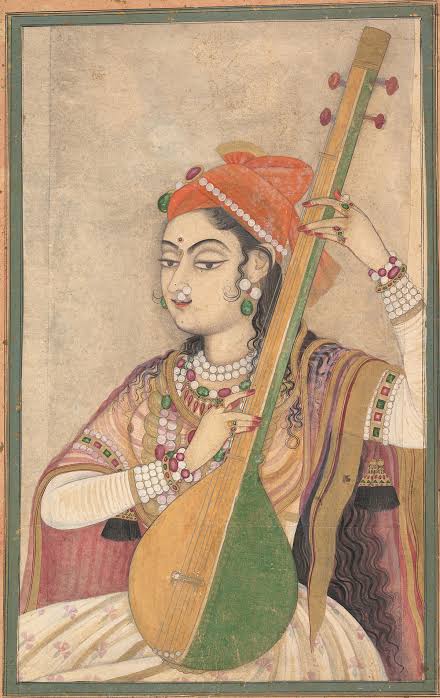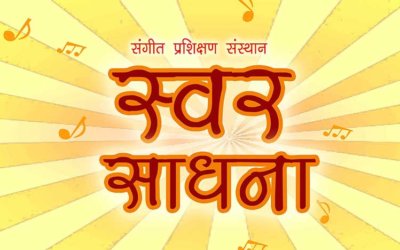Jaati – Singing
Along with the Gram and murchna, it is necessary to make the Jaati Singing also clear. In ancient times there was no object called ‘Raga’. In place of ‘raga’, at that time these Jaati were actually mool-ragas. Different forms these Jaatis, many ragas were born. The ten characteristics of Jaati are described as ‘, graha, taar, mandra, nyas, apanyas, vinyaas, bahutva, shadava and odava’. These are also the ten signs of ancient ragas. The details of them are as follows:
Ansh Jaati – In singing, the initial swara of the murchana is called ‘Ansh Swara’. In other words, ‘Ansh’ is used to start the octave itself. This swara is also called ‘Prana Swara’ or ‘Jiva – Swara’. But there could also be more than one Ansh or fraction swaras in any one jaati. In the Badya-Vidhi, this is also known as ‘sthai swara‘ permanent voice has shed. Instruments like Mridang are mixed in this swara. If Jaati singing is used today, the squares of sitar or veena will be mixed in this ‘Sthai Swara’ only. Its name is ‘Sthai’ due to its constant echoes. Today, every sthai voice in the melody and thaat method, this sthai swara is called ‘sa’. As a result, the seven swaras of each moochna have become ‘S R G M P D N S’. The ‘Samvadi’ swara of ‘ansh’ was never omitted (ie they did not rule it out), which is why it was called ‘Vaadi swara’.
Grah – The Swara from which jaati-singing started, that Swara was called ‘Grah Swara’. When singing and playing in a jaati used, to begin with, ansh swara, it was also called ‘Grah voice’.
Tar-Mandra – It was seen that Which jaati with which Swara can prevail in ‘Taraspatak’ and which jaati with which swara will prevail in ‘Mandra -saptak’. It was said by scholars that in special jaatis ‘Taar saptak‘ will be prominent.
Nyas jati – The swara at which the part gets to end, it is called ‘Sannyas’.According to this , one can guess the end Swara in various geets which is ‘nyaas’.
Upanyaas-Swara at geet’s middle gets end, that swara is called ‘upanyaas swara’ .
Vinyaas – Swara which breaks two parts is called ‘vinyaas’ swara.
The use of the scratch of the planet, Nyaas etc would be a user with the singing of ragas while singing the jaatis, was used to be at that time. Therefore, the definitions are not clear in the understanding for today’s students. To understand them, you have to guess that you are listening to a song which is being sung in only eight lines. (For your understanding, you can consider the four lines of the song as ‘sthai’ and the last four lines as the ‘Antara’.) These include the swara that the song will start with, the ‘grah swara’ and where it ends will be called ‘Nyas Swara’. Where the first half of a song ends(from your point of view the last swara of the sthaai), it will be called the ‘upanyaas swara’. The end of the first section of the song (ie the last swara of the second line) will be ‘Sannyas’.
The ending of the words of Vidari (ie the first line or other local places) used swara is called ‘Sanyaas’.
Alpatv-Bahutv :
A ‘raga’ cannot be produced till one cannot wait longerbon some swaras. So the swaras are held for longer time so as to form a ‘raga’, they are called ‘Abhyas-Moolak-Mhutra’ and where stood little lesser cause harmony, this way is called ‘Alanghan-Mulak-Bahutva’. According to this rule, the left out swaras are called ‘Langhan-Moolak-Alptva’, those which are less used are called ‘Abhyaas-Moolak-Alpatva’.
These are related to no. of swaras used in a raga which are known as ‘odhav’ , ‘shadav’ and ‘sampurna” jaatis of singing. Giving the example of jaati ‘Panchami’ in which two swaras can be seen namely ‘Pa’ and ‘Re’ (where singing will begin from any one swara from any two of them ). ‘Ni’,‘Pa’ and ‘Re’ are ‘upanyaas’ swaras (in which musical composition will end using any one swara from these three ) ‘Pa’ can be chosen as ‘Nyaas swara’ (with which the musical composition will end with).



0 Comments